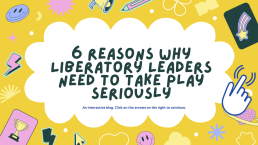6 Reasons Why Liberatory Leaders Need to Take Play Seriously
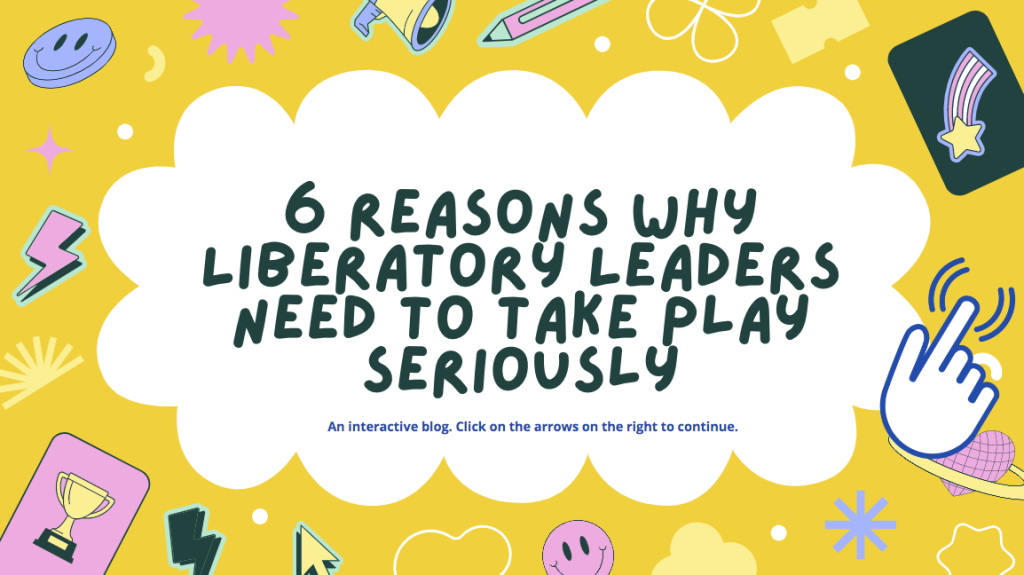
When was the last time you played, did something just because it was fun and felt good? Did you finish feeling enlivened, relaxed, energized, or something similar? Leadership Learning Community has been exploring the roles of fun and play in our activities. This exploration didn’t start out super intentional, but rather as a reaction to the pandopalypse we’ve all been living in. Over time LLC began discussing play in relation to our work, referring to aspects of our work as “playful” or describing meetings and convenings as “play spaces.” For us, this isn’t a cutesy communications strategy. As LLC began to turn our attention to play, we realized that play, when grounded in collective purpose and steeped in values, can be a liberatory act.
Here are six reasons why we believe play can help leaders embrace liberatory practice.
Fuel Ideation
- Play can be described as “something that’s imaginative, self-directed, intrinsically motivated and guided by rules that leave room for creativity.” By creating space for creativity and imagination, play helps to quiet the self-conscious, judgemental inner critic. This voice discourages deviations from the known norm and makes trying on new things feel too risky. Without that voice, perhaps there is room for a little bit of magic to invite in new possibilities. Taking a playful stance allows us to adopt a child-like or beginner's mind, and helps us to develop mental plasticity and adaptability while simultaneously reminding us that our options aren’t all pre-determined and that there is space for the not yet known. This opening of possibility is critical as liberatory transformative efforts are dreaming and imagining into being something that does not currently exist. To do that, we have to stretch our imagination muscles.
- Practice: Start the meeting with a playful check-in question like, “If you could go back in time (or to the future), who would you want to meet?” or pick a favorite zoom filter to start the meeting with. Check out more of our check-in questions here.
Nurture, Healing & Wellness
- Play is an effective way to manage stress and can be a tool of both self and collective care. Play helps us to be in the moment, similar to meditation. In contrast to oppressive practices, which are confining and restrictive, sapping our spiritual and figurative energy; the enlivening nature of playful activities may help to heal these wounds.
- Practice: Host meetings near a park, the ocean, or in nature. Take a walk. Find new analogies for the work we do.
Create New Models of Strategic Thinking
- Playing makes things real, during play we don’t just imitate we also imagine and embody (something). Trying on liberation in play spaces/playful ways allows us to feel the benefit of liberation in the moment while we are learning more than we currently know. This focus on liberation now means that during play liberation doesn’t just have to be a future goal. In addition, some studies suggest that play supports memory and thinking skills, so play may literally help us think our way to freedom.
- Practice: Do some creative writing. Some of us have and are taking a writing course with Dara Joyce Lurie. She shares a quote from Edward de Bono, “Rightness is what matters in vertical thinking. Richness is what matters in lateral thinking. Vertical thinking selects a pathway by excluding other pathways. Lateral thinking does not select but seeks to open up other pathways. With lateral thinking one generates as many alternative approaches as one can. With vertical thinking one is trying to select the best approach, but with lateral thinking one is generating different approaches for the sake of generating them.”
Expand Leadership Opportunities
- Because play utilizes “creative rules” that are distinct from the rules and restrictions of regular life, in play, there exists the opportunity, though not the requirement, to separate capacity from expertise. All of a sudden, players “can” do things even if they aren’t experts at said activity. So you can play at being a pilot without actually knowing how to fly a plane. In playful spaces more people can function as leaders, meaning more people can be actively involved in imagining liberatory practice into being.
- Practice: Acting and improvisation exercises like “Questions Only” where you act out a scene given to you with only questions.
Build Community:
- Play offers us the opportunity to connect. When we create safe play spaces there is little risk to engaging. People can show up with a less performative stance. BIPOC leaders frequently find themselves under a spotlight or a microscope. The labor of being forced to code-switch or deal with being othered is exhausting so I imagine that BIPOC leaders especially are eager for safe spaces to be themselves. Where showing up as one’s whole self is an invitation and a demand, and for the purpose of supporting the BIPOC leader not to be of utility to others. Often BIPOC leaders are told to show up as their full self because observing BIPOC leaders is good for an observer, not for the benefit of the BIPOC leader.
- Practice: Shorten the strategic side of the meeting, and incorporate the karaoke, fun, and games as part of the meeting, not just extra at the end.
An Invitation to Wholeness:
- By allowing us to focus on pleasure and fun rather than objectives and outputs, play encourages us to be more than what we can produce. Perhaps play is akin to rest in that way, and maybe we can view embracing the revolutionary possibility of play in the same way that we have begun to respect how rest can be resistance. This need for play spaces may prove to be especially important for BIPOC leaders given that kids of color are often adultified early, and deprived of the space to play freely. By recapturing play, as we have attempted to reclaim rest, we may enliven our work and find new paths toward liberation.
- Practice: Make space for play at every meeting whether it’s a check-in, the location, the activities, or the bonding event. Make play and joy part of your community agreements so they show up intentionally during your work.

Ericka Stallings is the Co-Executive Director of the Leadership Learning Community (LLC) a learning network of people who run, fund and study leadership development. LLC challenges traditional thinking about leadership and supports the development of models that are more inclusive, networked and collective. Prior to LLC, Ericka was the Deputy Director for Capacity Building and Strategic Initiatives at the Association for Neighborhood and Housing Development (ANHD), supporting organizing and advocacy and leading ANHD’s community organizing capacity building work.

Nikki Dinh is the daughter of boat people refugees who instilled in her the importance of being in community. Though she grew up in a California county that was founded by the KKK, her family’s home was in an immigrant enclave. Her neighborhood taught her about resistance, resilience, joy and love.
originally published at Leadership Learning Community
Network Weaver is dedicated to offering free content to all – in support of equity, justice and transformation for all.
We appreciate your support!
donate in the box above or click here
by Ericka Stallings and Nikki Dinh, co-executive directors of Leadership Learning Community
Organizing Liberatory Networks: An Invitation
These are emerging reflections on the work we have done within networks, which includes networks for and led by people of color, multi-racial networks, queer networks, immigrant networks, and other groups that have come together to shift systems towards equity and liberation. In particular, we want to name the leadership of Black and Indigenous women and femmes within these networks who contribute wisdom and emotional labor to support the work of these groups. We are also grateful for the wisdom shared by The Queen Sages, Child Care for Every Family, Protecting Immigrant Families, All Above All, Transformative Leadership for Change, Center for Innovation in Worker Organization and their Women Innovating Labor Leadership Program, and all the participants of the movement network organizer pilot.
The events of the last year, continuing to this year, have called on us to deepen practices that center intersectionality, solidarity, racial justice, and mutual aid. Organizers have been working one-on-one with people in communities and side-by-side with other organizations to support people’s immediate needs and build movements for love, dignity, and justice. Along the way, organizers have deepened their praxis on transformational organizing and working in networked ways. (We think of praxis as having a stance of discovery and learning as we experiment with and embody aligning our values, beliefs, and worldviews with our practices, mindsets, and ways of being.)
This blog shares what we are learning from organizers and grassroots groups about organizing with and in networks. These insights are constantly evolving and changing so we invite organizers, networks, capacity builders, and those who fund this work to learn, practice, and deepen our learning together on how to catalyze and shape liberatory networks. We are in a moment of possibility where we can hold the learnings from the last year(s) and continue to build, nourish, and sustain networks that disrupt conditions in the sector to advance love, dignity, and justice.
What Are Liberatory Networks?
Over the last decade, we’ve learned a lot about how to nurture and sustain powerful, equitable networks (by network we mean collective efforts that seek to align people across constituencies, geographies, issues, or movements to accomplish something no individual entity could do alone). Allen Kwabena Frimpong at AdAstra Collective has introduced us to different types of networks such as the decentralized, self-organized network with many overlapping clusters and a strong periphery. Folks like Deepa Iyer and June Holley have helped us to understand the roles individuals play within networks and movements, such as “the guardian” who creates the conditions for the network to thrive, or “the healer” who mends harm within it. Finally, organizers have helped us understand the essential capacities networks need to be sustainable and advance equity, such as weaving relationships that center equity and trust or managing polarities, conflict, and the distribution of power and resources.
As working in networked ways becomes the norm, we are seeing professionalization, technocratization, and the loss of the relational soul of many of our networks. Thus, we want to elevate what we are learning from folks of color and queer folks who have been catalyzing, co-creating, and evolving networks that embody transformation at the personal, organizational, and network levels. These networks are interdependent, relational, evolving ecosystems where we can be our whole selves, be mutually supportive and accountable, and co-create new futures—where both what we are doing together and how we are doing it are important and integral. In order to distinguish the work of these groups from conventional networks, we refer to them as “liberatory networks.”
Liberatory networks create space for long-term visioning, self-awareness, naming and addressing the oppression that is replicated in our strategies, and the healing of personal suffering. They support individuals to ground in their ancestral and spiritual roots. They have mechanisms to hold people through traumas, triggers, harm, and internalized oppression in ways that restore relationships and connection. Member organizations are actively doing anti-racism/oppression work internally to show up in solidarity with others and in accountability with community, staff, and board.
These powerful networks are disrupting what we have been taught, and now assume, about what strong leadership and operations should look like in the nonprofit sector. Many networks and organizations are moving from solo charismatic leaders to shared leadership, from “power over” to co-powering, from top-down knowing to collective meaning-making, from defaulting to habits of white supremacy culture to practices centering BIPOC leaders and advancing the collective liberation of all people. Through these practices, liberatory networks, in turn, enable us to advance equitable systems change and shift culture overall.
Invitation to Intentional Praxis
As Stacey Abrams points out, now is the time to build the infrastructure we need to have the power to bring forth our most radical imaginations for a new society. This infrastructure will be and already is networked with clusters of organizations and individuals that are interconnected. One organization or short-term coalition cannot meet growing community needs or support healing from trauma; cannot absorb, sustain, or deepen the engagement of millions of people who want to participate; and often cannot transform society. Liberatory networks allow us to build, aggregate, and wield more power. They can provide a space to reconnect and heal from racialized harm, isolation, burnout, competition, fragmentation, and campaign-to-campaign exhaustion. They can enable us to collectively deepen our praxis towards liberation.
Organizers are important bridgers both across and within liberatory networks. When organizers have space to work with community and network members, they can co-create liberated, powerful, and creative spaces that inform and shape liberatory networks. When included in developing bold visions and strategies at the network level, organizers bring these ideas into relationships and action on the ground.
Organizers are already drawing connections within their work and learning about and co-creating liberatory networks through their own experimentation. At the same time, organizers and other network members, such as capacity builders, facilitators, and funders, could be stronger partners and architects in building and nurturing the infrastructure we need for a liberated future if there were more spaces for intentional praxis and broader sharing of these learnings across – in addition to within – networks.
What We Are Learning About Organizing Liberatory Networks
The following are praxis seeds for organizing in networked ways to advance liberation. We draw on stories shared through two pilot classes co-authors Susan, Trish, and Robin did with 29 organizers, a convening we did with grassroots leaders and funders, and our own experiences partnering with organizing groups and networks. We invite you to contribute your own insights as well so that we can continue a dialogue about organizing liberated networks. What is your praxis? How can we continue to evolve our practices to get closer to our aspirations of liberation and racial justice?
1. Centering racial equity and healing, particularly addressing and repairing inequitable distribution of power, resources, and labor
When working in and across networks, organizers are being thoughtful and transparent about how to marshall resources, recognition, and capacity equitably given current and historic racism and intersecting oppressions. Organizers spoke to three ways that they are doing this. First, several organizers shared how they use somatic practices and storytelling to support BIPOC members to develop a racial analysis, connect to ancestral wisdom, and embody what it means to center themselves. As one example, an organizer described this somatic stance: “I have my hands out; I’m open. I have one foot forward and one foot back; as a male Latino, I’m listening to women and courageously taking space against patriarchy.” Second, when individuals are grounded in their whole selves, organizers can facilitate conversations about the differences among groups. One person, for instance, shared how white and BIPOC caucuses helped develop radical relationships across racial groups. Lastly, organizers in networks are addressing inequitable distributions of labor, resources, credit, and compensation. Women of color and Black women and femmes, in particular, often hold emotional labor and relational work in networks. Participants at the NEST1 convening discussed ways to shift this dynamic by compensating women for this invisible labor, sharing or shifting responsibilities to white men, and prioritizing regional tables that center leaders of color.
Opportunities for Praxis Exploration
- Centering people of color, blackness, and indigenous peoples while de-centering whiteness
- Building a foundation of trust to recognize power differences and have courageous conversations
- Embodying love, human dignity, and compassion
- Unpacking levels of oppression while recognizing the historic social construction of racism
- Moving from oppression to liberation by reconnecting to source, story, body, and emotions (thanks to Monica Dennis for this framework)
- Attending to who does the emotional labor and how we share that or rectify it
- Managing the tensions between addressing immediate needs of communities of color and laying long-term foundations for transformation
- Reflecting on where our movements have failed to embody our values and consciously co-create the conditions for embodying them moving forward
- Centering reflection, learning, repair and re-creation as a continuous and loving process.
2. Doing the inner work needed for personal and interpersonal transformation, which is critical for nurturing radical relationships and our interdependence
There are two areas of inner work that are top of mind for organizers working in networked ways. The first area is nurturing radical relationships and connections within and across movements. Two of the organizers we work with shared that, when they had the opportunity to develop a shared political analysis and vision with a people of color caucus over the course of a two-day retreat before collaborating with the broader network, it enabled them to nurture trust, recognize shared values, and find ways to honor each person’s and organization’s contribution to the movement. Another organizer shared how they connected two groups that would not normally be allies by asking a powerful question: “What does home mean for you?” This question later led to a storytelling organizing process across multiple organizations, supporting both individual and group transformation.
The second area is embracing generative tensions as a liberatory practice. These tensions are often framed as polarities and include abundance and scarcity, conflict avoidance or expression, centralization or decentralization, focusing nationally or statewide, transparency and information overload, accountability for racialized harm and cancel culture, calling partners into a radical stance or compromising for an interim win, and so many more. Organizers regularly navigate these tensions as their context continuously evolves. This involves reframing disagreement from being divisive to being generative. Navigating tensions can deepen our collective capacity to make meaning of complex issues. It can help groups discern when our desire for resolution is rooted in our discomfort with holding multiple and different ideas (so we could get more comfortable living with conflict) and when this desire is needed to maintain the integrity of the network. Organizers further shared that they use racial healing, restorative justice, conflict resolution, polarity management, forward stance, and many other approaches to name and reconcile tensions and realign and heal networks and relationships.
Opportunities for Praxis Exploration
- Integrating head, heart, and body
- Embracing change and emergence
- Nurturing a whole person and their ways of being
- Creating space for relationship building
- Recognizing difference, naming tensions and polarities, reconciling conflict generatively, and healing harm
- Tending to well-being and sacred grounding
- Supporting self and community care
3. Shifting to more emergent and collective ways of understanding and navigating complex systems change
Organizers regularly engage community and network members to analyze systemic root causes and identify leverage points for transformation. They use a range of practices like storytelling circles and collective vision murals to do so. During the pandemic, organizers became pros at adaptation – moving to digital organizing, virtual policy advocacy, and mutual aid to address emerging community needs. They built in check-ins, yoga, breathwork, meditation, and other practices to support themselves and community members to be resilient. Organizers are always adapting as they seek complex systems change including:
- Tending to both campaigns and the sustainability of people, organizations, and the network overall
- Figuring out when all network members need to be in agreement and when a critical mass of a network can move things forward
- Having ways for parts of a network to opt in or out of democratic processes
- Flexing between decentralized experiments with liberated models and coordinated targeted campaigns
NEST convening participants also shared how networks are themselves systems, and people need well-resourced spaces to disrupt white supremacy, model liberatory ways of being with each other, and translate learnings from successes and failures without judgment.
Opportunities for Praxis Exploration
- Forging interconnectedness and interdependence and breaking silos
- Shifting from scarcity to abundance
- Embracing change and emergence while letting go of certainty and the idea that healthy networks are static
- Developing a complexity mindset, which means assuming disagreement, unpredictability, ambiguity, and emergent patterns
- Listening deeply, holding multiple perspectives (i.e., individual, organization, and network), and generating nuanced alternatives
- Experimenting as a way to take risks, innovate, and learn
4. Sharing leadership and decision-making power in ways that lift up Black and Indigenous peoples and other people who have historically been excluded from power
Sharing leadership is core to transformative organizing in networks. What this means for organizers is supporting community members to recognize and develop their own leadership, and centering Black, Indigenous, and other people of color in leadership (both of which are critical in non-network contexts as well). For instance, women of color organizers Trish Tchume and Aida Cuadrado Bozzo have worked with groups of organizers to navigate complexity and emergence (which are typical for networks), in support of a shared vision, build teams that are intentional about staying in “right relationship,” and call in community members to a liberatory stance.
Sharing leadership and power also means creating transparent feedback loops, opportunities for community members to practice different leadership roles within a network, and spaces to collectively connect to heart, body, and spirit. For instance, one organizer shared how they used salsa dancing to invite people to show up as their full self and see the different roles in a movement (e.g., lead, follower, creating space, etc.). As another example, organizers are engaging community members (who are compensated for their time), to gather community perspectives, stories, and experiences; shape priorities of the network itself; review messaging, materials, and tools that are used with community members; and co-develop actions on shared campaign tactics.
Opportunities for Praxis Exploration
- Recentering BIPOC leadership, particularly as decision-makers and liberated gatekeepers
- Cultivating not one leader but many leaders who can trade-off and play different roles
- Engaging and developing leadership at many points and levels of authority in the system
- Systems and processes for shared meaning making, co-creation, and mutual accountability
- Connect to self as a whole person and developing trusting relationships with others
- Sharing decision-making power, credit, resources, influence, and turf with attention to liberation, equity, and reparations
- Collectively determining how funding will be raised, used, and distributed in the network
5. Creating space to connect to our multiple wisdoms and intelligences (e.g., ancestral, spiritual, natural, creative, somatic, etc.)
Some organizers have long histories of connecting community and network members to multiple wisdoms and intelligences (e.g., theater of the oppressed as a somatic and artistic practice for political education). Other organizers spoke to how challenging it is to shift organizing patterns to make space for spirituality, emotions, artistic and experiential practices, and bodywork. Many organizers strive to hold themselves, partners, and community members as whole people in their full dignity, which means supporting people to develop their innate talents, decolonize, heal, and express themselves in the ways that make sense for themselves. This is critical to transformational organizing and to organizing liberated networks. Trish Tchume and Aida Cuadrado Bozzo, with Viveka Chen, Zuri Tau, Holiday Simmons, and Susan Wilcox, have developed “Calling In & Up: A Leadership Pedagogy for Women of Color Organizers,” which supports organizers in creating liberated spaces that embrace multiple wisdoms. The guide shares a range of spiritual, cultural, and somatic practices to decolonize spaces, create the conditions to live into liberation, and build and deepen relationships.
Opportunities for Praxis Exploration
- Recognizing, lifting up, and engaging wisdom in multiple forms including experiential, ancestral, spiritual, natural, somatic, art and culturally-based forms of expression and meaning-making
- Embracing being a co-learner and co-creator rather than or in addition to being an expert
- Rooting into a values-based frame
- Shifting approaches to organizing that disproportionately value analytical, intellectual, and logical forms of knowing
An Offering for Praxis
This blog shares what we’ve been learning from organizers and grassroots groups about organizing liberatory networks. We invite you to share your learning, insights, and questions so that we can continue a dialogue about organizing liberatory networks together.
How are your networks embodying liberatory network approaches?
Please share your reflections in the comments below!
1The Networks for Equitable Systems Transformation (NEST) convening took place across 2.5 days in 2019. The group consisted of network funders, participants, and intermediaries who shared space and surfaced challenges, opportunities, and questions related to their work in networks. Read more about the design of the NEST convening and key takeaways from participants here.
2Here we are not referring to an organization’s membership base since not all organizations have a membership model although there can be overlap when community members are also members of an organization.
We'd like to thank Panta Rhea for supporting the movement network organizer pilot and our efforts to share this learning with you through this blog.
About the Authors
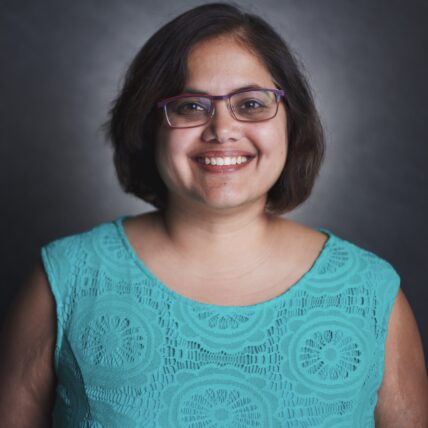
Susan Misra’s life purpose is to work with advocates and activists to actualize their visions and values of justice and equity in their relationships, structures, and work today. She has over 20 years of experience in developing equitable, sustainable organizations and networks for movement building.
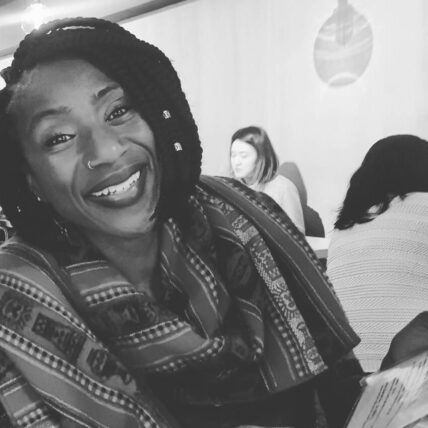
Trish Tchume is the Leadership Program Director for Community Change and comes with almost two decades of experience helping everyday people see their role in the gorgeous project of building a more just and equitable society.
Robin Katcher strengthens organizations, leaders, and networks on the front lines of social change. Her deep experience in social justice movements – as an organizer, educator, legislative advocate, and board member – informs her rigorous approach to building powerful organizations, leaders, and networks.
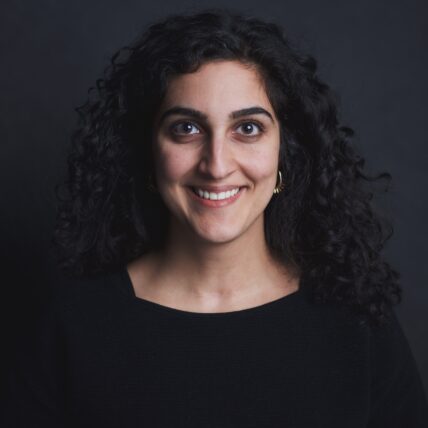
Natalie Bamdad joined Change Elemental in 2017. She supports Change Elemental consulting engagements through research, analysis, and project management. Her core areas of expertise include strategic planning and program design and implementation.
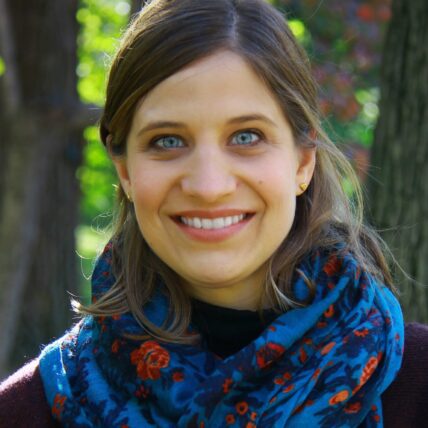
Natasha Winegar is a researcher, writer, communications specialist, and coach. She joined Change Elemental in 2013, and is our Research & Communications Manager. She collaborates on our consulting, coaching, and learning engagements, bringing a blend of curiosity, imagination, strategic insight, and a commitment to love, dignity, and justice.
Originally published at ChangeElemental.Org
Banner Photo Credit: Cuba Gallery | Flickr
by SUSAN MISRA, TRISH TCHUME, ROBIN KATCHER, NATALIE BAMDAD, NATASHA WINEGAR
